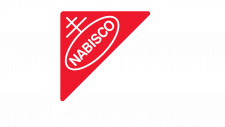Hershey Logo
Milton Snevely Hershey founded the first American chocolate company, Hershey, which made him a millionaire. It was he who came up with the idea of compressing chocolate into the familiar bars. Having a large income, he did not bathe in luxury but invested it in enterprises that created jobs in times of unemployment, sports center, and educational and cultural institutions. He built a whole city for his workers as well as opened a Hershey Industrial School. His trust donated money and land to the University of Pennsylvania Medical Center. Thus, Hershey not only brought chocolate to the world but also a lot of good deeds and values.
Meaning and History
After Hershey finished fourth grade, his parents decided it was time for the young man to learn a trade. He began to study typewriting but hated it, and in 1872 he began working for a confectioner in Lancaster, Pennsylvania. Four years later, Milton Hershey left for Philadelphia and used his knowledge to open his first business, Crystal A. Caramels, which failed just like his second attempt. Hershey then returned home and built his third venture, the Lancaster Caramel Company, into a global giant. At the 1893 World’s Fair in Chicago, Milton saw German chocolate-making equipment and immediately bought it, planning to use it to make caramel icing. In the process, he decided to make chocolate with it. Things went so well that in the early 1890s, Hershey changed focus from caramel to chocolate. He introduced the first Hershey’s milk chocolate bar in 1900. Hershey’s Kisses, the world-famous confectionery treat, appeared in their familiar foil wrappers in 1906. Before World War II, factory production reached such proportions that it was able to regularly provide candy bars to American soldiers.
What is Hershey’s?
Hershey’s is a giant chocolate manufacturer, but it is more than just sweets. The company has been experiencing a strong craving for salty snacks lately, and attempts to pair chocolate with pretzels have been hitting the market. In celebration of the treat’s 100th anniversary in 2007, Hershey’s produced a giant KISS that weighed over 30 thousand pounds.
1890 – 1898
“National Chocolate Tablets” was printed using a very elegant, fancy font. The inscription was split into two lines. The “National” part was bold and done in brown with a darker brown and red outline and was written curving upwards. The second line was printed in red and had a brown shadow. In the upper right corner, there was a large number “5”, which suggested the price of these sweets. The top was decorated with a brown line and delicate, ornate elements. The whole emblem seemed to be hand drawn by someone with very artistic and perfect handwriting. The brown color in the logo surely referred to the chocolate, while red attracted attention and encourage to try the treat.
1898 – 1905
As the chocolate department transformed into its own brand, a new logo was introduced. It did not have as many details as the previous version but was no less sophisticated. “Hershey’s” inscription was done in red with a thin black outline and a combination of white and brown lines for a shadow. It had a three-dimensional appearance which was enhanced by the fact that the inscription was arched. The designers used a bold font with short, pointy serifs. Although all the letters looked uppercase, the first letter was raised just a bit above all the others.
1900 – 1915
A new emblem had a royal touch to it thanks to a golden color and fancy curves featured in some of the letters. Tilted “E”s further enhanced the extravagant look of the emblem, while wide spacing created a feeling of power and authority. The first letter was the only capitalized letter and was not only raised above the others but was also set a bit lower than the remaining inscription. In some cases, the inscription had a dark brown background, while in others it was white.
1906 – 1915
The new logo did not differ from the previous one when it comes to the style of the inscription. It was only done in silver instead of golden and placed on a dark brown background for contrast. Although the color combination is quite unexpected, the silver color created a timeless brand image that reflected the stability and strength of its position on the market. The brown color was undoubtedly used to make an association with the chocolate.
1910 – 1959
The new logo used the same color palette, but now the inscription was made larger and featured all uppercase, bold lettering. This logo became the basis of all the logos that were created afterward. The spacing between sans-serif letters was minimal, which made the inscription not only easily applicable to any size of the product. In addition, such an approach creates an image of a strong, confident brand.
1926 – 1936
The inscription on the new logo did not look much different, although it did look a bit cleaner. The most difference was achieved by changing the background to an almost black-brown. The modifications created more contrast and made the logo look more professional.
1936 – 1940
It seemed that the letters were pressed vertically, which made them shorter and thicker. In addition, the letters seemed to have more volume thanks to brighter highlights.
1940 – 1952
The company updated the logo to reflect what was going on in the world. Not only the background was a reddish brown color, but the silver letters also acquired a pinkish tint to them. The red is often associated with blood and aggression, which are part of any war.
1952 – 1968
The pre-war emblem was brought back with a few changes. The letters appeared flat and light gray in color. The font has also been changed, although it was very similar to the previous versions that featured tall letters. The background was a dark brown with just a tint of red.
1968 – 1970
Along with the rebranding of the whole company and the purchase of other brands, the emblem was also updated. The strokes were cleaned and the color of the letters was made lighter. The shape of the letters was kept almost the same and they only got thicker.
1970 – 1973
It might seem nothing has changed, but the letter “R” looked different. To be more specific, its leg was curved. This added a unique touch to the brand image and made the emblem more interesting.
1973 – 1976
Finally, the name had a dark brown, almost black, base for more contrast. It was also used to reflect the luxury everyone had access to and the growing power of the company as it was expanding and getting an even stronger hold of the market.
1976 – 2003
A reddish tint was brought back. The main reason for this was the fact that chocolate products were no longer the main activity of the company. The new color, accordingly, was less associated with chocolate sweets.
2003 – 2010
A start of a new century was surely a good reason to update a logo. It was one of the most drastic changes in a very very long time. For the first time, there was a frame around the brown base. The latter was done in the same style as the inscription. Both featured a metallic silver color with a black shadow that created a 3D appearance. The background was kept the same deep burgundy. It was a stylish and modern emblem that showed that the company caters to modern tastes while preserving the original values.
2010 – Today
In 2010, the brand understood that the old brand image held more value than they thought. Thus, the designers create a logo that was closer to the brand’s roots, an image that consumers got used to seeing over the century. They used a dark brown for the letters themselves, leaving the background white. The font was preserved. This design was a perfect blend of modern and old.
Font and Color
The brand that is famous for its chocolate used various shades of brown as a big part of its logo for almost its whole history. Another color seen in the logos was silver/light gray. This is not only a neutral color that allows the brand to expand the range of its activities, but also a timeless choice, which was proven a century-long usage. The silver color is also associated with strength, authority, and stability. These are all great features for any company. When it comes to font, the company transitioned to a bold, sans-serif font early on in its history. It has undergone very minimal modifications despite many updates to the logo. Before that, its logos featured very elegant, luxurious, serif typefaces.



























